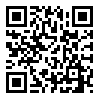BibTeX | RIS | EndNote | Medlars | ProCite | Reference Manager | RefWorks
Send citation to:
URL: http://ncmbjpiau.ir/article-1-374-en.html
Aim and background: The Wdhn13 gene codes the LEA 2 protein family. LEA proteins were identified and discussed in wheat and cotton as a proteins cumulative first time in the late embryo period. The primary structure of LEA proteins, including early charged domains and non-charged of polar amino acid residues non hydrophilic is that LEA proteins are being implicated on hydrophilic.
Material and Methods: in this research, the Phylogenetic and bioinformatics relationship of Wdhn13 in 8 wheat species was investigated. The HindIII (AAGCTT), AluBI (AGCT) and TaqI (TCGA) restriction enzyme were used for molecular analysis and by biological CLC main workbench 6 software the Insilco and out of vitro were applied in sequence
Result: Phylogenetic analysis result based on UPGMA algorithm showed that studied wheat species were divided into 3 clusters. The first cluster includes 4 wheat cultivar NCBI database’s sequence, T.aestivum CV Sardari, T.durum CV shosh, T.durum CV borojerd. The T.urartu was located in the second cluster alone. The third cluster includes T.aestivum CV gonbad and T.dicocoides.
Conclusion: The results indicated a relationship among some wheat species.
Received: 2013/09/3 | Accepted: 2013/09/14 | Published: 2013/09/14
| Rights and permissions | |
 |
This work is licensed under a Creative Commons Attribution-NonCommercial 4.0 International License. |





